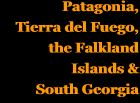'Transported' for life...
Ushuaia Prison - 'The Presidio'
President Roca passed a law (No. 3335) on 26 December 1895 with the intention of establishing a penal colony in Argentina's southern territories. The original intention had been to follow the example of Britain and France, both of which had 'transported' prisoners to colonies (Australia, and Algeria & New Caledonia) which benefited from the forced labour and the eventual freeing of possible permanent settlers. After early attempts to use Staten Island (Isla de los Estados) the site at Ushuaia for a jail was chosen on 3rd January 1896. The first prisoners were intended to complete their terms and then receive a monthly salary and a plot of land on which they could build a house and raise a family.
Prisoners arrive at Ushuaia's muelle. Tracks and a selection of wagons are also visible
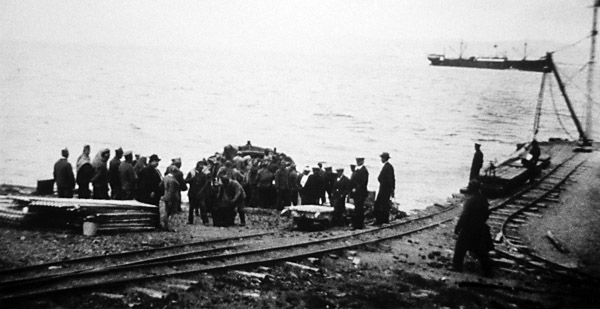
However, those first 'relapsing' prisoners who were sent south had mostly been sentenced to only short terms of three years or less. After this length of time they mostly wished to return north as soon as possible, so the government's policy had to be reconsidered. From 1899 Ushuaia began to receive more serious offenders with life sentences.
The prison itself was very substantial. Two-storied stone cell wings with the usual central corridor and gallery, radiate out from a central hall (not yet built in this picture). There were also workshops, kitchens, a power plant and everything else needed for a self-contained community.
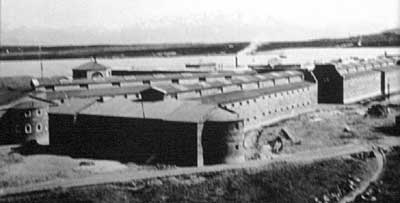
A temporary wooden railway
The prisoners themselves built the gaol, using basalt rock quarried locally. The prison director, Señor Catello Muratgia, asked for permission to purchase Decauville type track and equipment to speed up the movement both of the rock and of timber from the forests around the town. Until the equipment arrived in 1908 a home-made wooden rail ('xylo-carril') system was used. This used oxen to haul small wagons out towards the Beagle Channel and the old quarter of Ushuaia.
A proper 'Decauville' system
From 1908 the 'proper' 60 cm. gauge railway developed rapidly, in length and complexity, and in terms of its engines and stock. The network of lines ran out onto the slopes of Mount Susana, into the Río Pipo valley and eventually into the Cañadón del Toro, now within the National Park. Sawmills were built by private enterprise and the timber used for house-building and other purposes.
The small 0-6-0T brings a train of prisoners back through the town after their shift in the forest. Armed guards occupy the last two wagons.
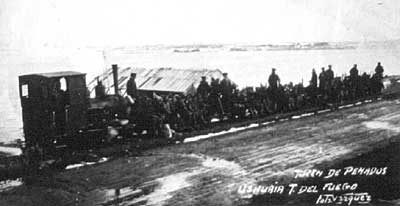
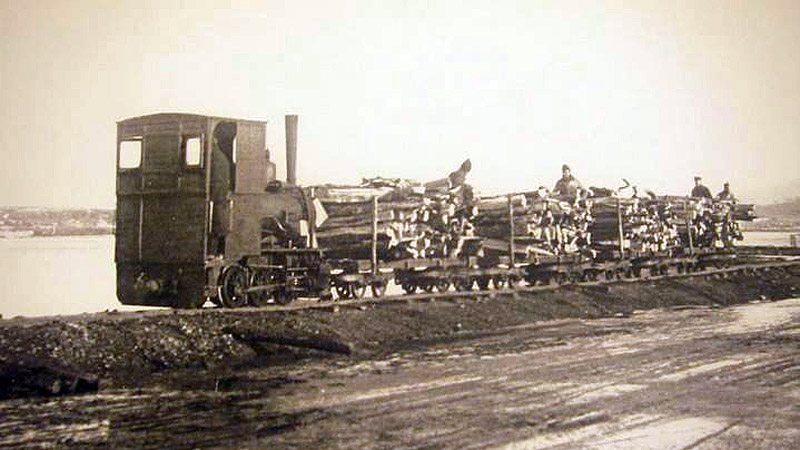
Along the waterfront
The 'mainline' ran along the seafront from the prison or 'Presidio' at the far (eastern) end. A large part of the forestry rail network was ten or more kilometres out to the west.
The rails can be seen along the sea front edge of the town's main street, now Calle Maipu.
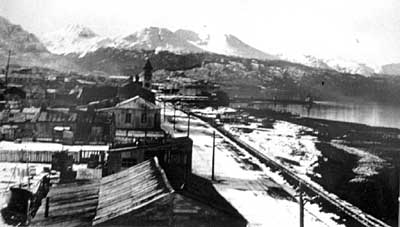
Prisoners would be carried out each day by train, and then marched under guard to the place of work.

Digging ballast, with a hopper wagon visible on the left.
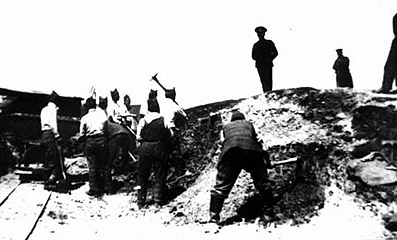
Winter snow
Whilst summer in Tierra del Fuego is pleasantly mild, winter can be bitter.
Prisoners, below, excavating a cutting and laying new track in the snow.
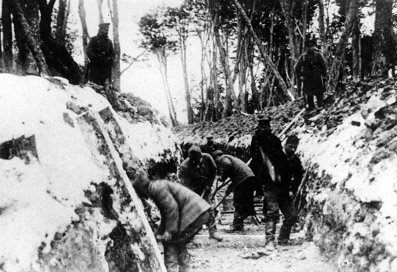
Clearing snow from the tracks

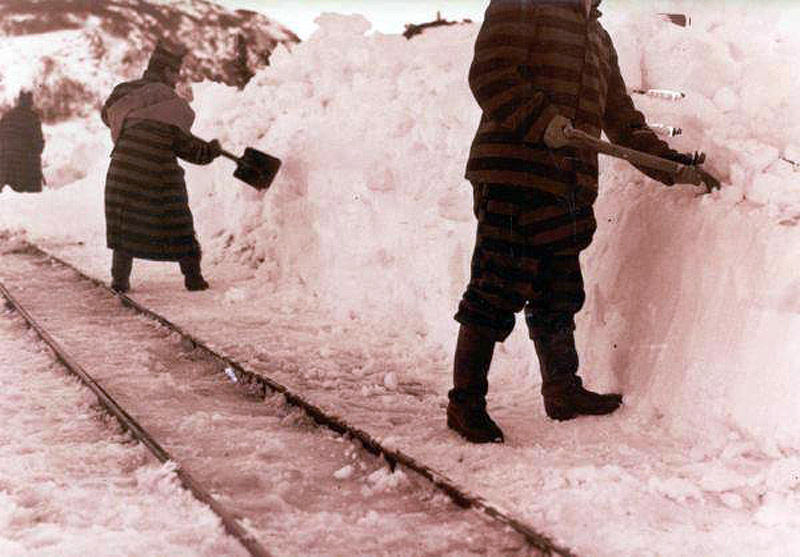
And the 1929 Jung 0-8-0T stuck in a snowdrift.
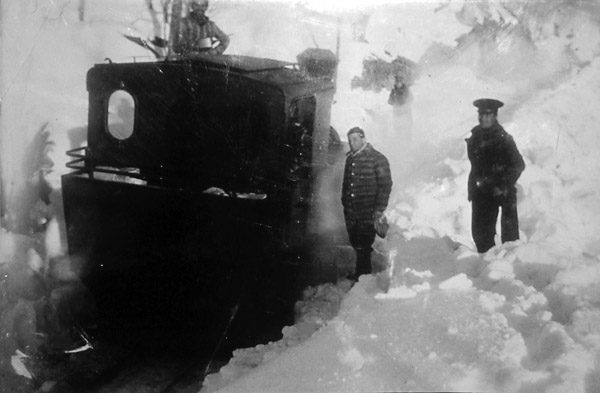
A timber train is unloaded in the town. Two other locos are visible in the background
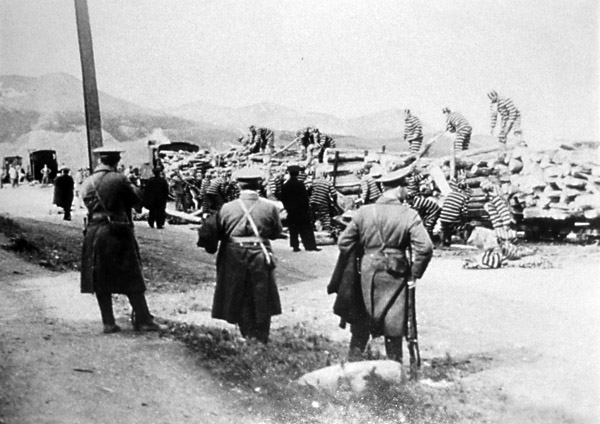
And at the end of the day, the forest workers come back again.
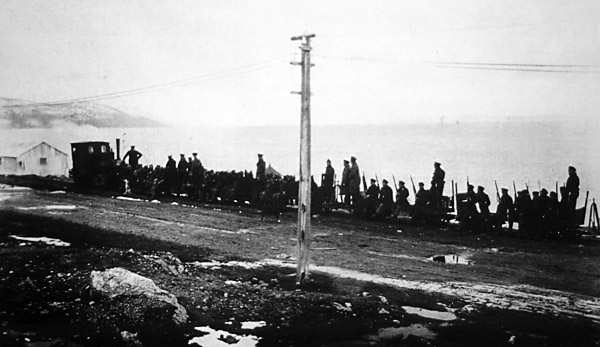
First class passengers
The line was used for the transport of all sorts of goods, for the town as well as the prison, and occasionally visitors would be transported by a special train.
The photo below shows a group, including a number of women, riding on makeshift passenger carriages behind one of the O. & K. 0-6-0WTs. Since the loco has not yet received its wooden cab side-screens and is making do with canvas rolls, it seems likely that this is a fairly early photo. Another picture taken on this occasion, not shown here, suggests that the wagon immediately behind the engine is an improvised tender full of wood fuel.
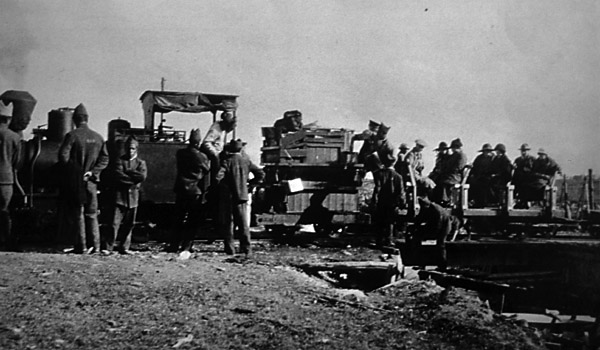
A temporary road construction line?
Señora Alicia Lazzaroni has suggested that around 1940 the national roads administration (Vialidad Nacional) laid a temporary narrow-gauge line in order to build a causeway between the town and the mission. This apparently had its own locomotive and 'zorras'( = inspection trolleys, but may in this case may mean small internal combustion locos).
Closure
Whilst the jail closed in 1947 the railway was maintained in operation until 1952, after a severe earthquake in 1949 had destroyed much of the trackbed into the Cañadón. By this time the system was rather run down and indeed only one loco survived to the end.
References:
1 The photographs were copied by courtesy of the Maritime Museum, the Regional Museum and the FC Austral Fueguino. Special thanks are due to the Maritime Museum for scanning some of the photos and forwarding them.
2 Many of the historical details were gleaned from the FCAF website.
3 The locomotive details were provided by Christopher Walker, partly from Reg Carter's comprehensive lists.
1-2-2018
|

